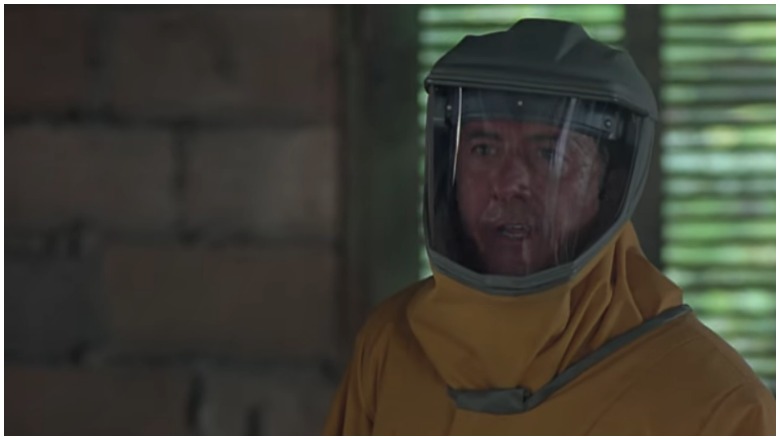
Outbreak Is Outbreak based on real events? Is it accurate, scientifically?
Outbreak, the movie, does not have at true story behind the film. It isn’t based on real events — but with that said, there are many aspects of the film’s plot that are scientifically accurate. There are also some aspects of the film that might remind people of the global coronavirus epidemic taking place in the real world.
Outbreak, as a “contagion film,” is far less accurate than the actual film Contagion, experts say. It’s described by one expert as “pure Hollywood fiction.”
Here’s what you need to know:
How Accurate Is the Science Behind Outbreak? Could the Film’s Events Happen in Real Life?
No, Outbreak is not a scientifically accurate film. Brian Amman, an ecologist for the Centers for Disease Control and Prevention, talked to Wired about all of the ways in which Outbreak doesn’t cut it.
Amman first noted how careless the doctors and researchers are in the film, often shaking hands with one another in contaminated areas, for example. “You see people shaking hands,” he said, “and that doesn’t occur in an outbreak area. If there is some kind of a greeting, it’s usually elbow-to-elbow.” He added, “It’s total chaos. It’s a mess. It’s pure Hollywood fiction.”
As for the scene in Outbreak which shows how the virus originates (with a monkey being shot by a tranquilizer gun), Amman said, “I don’t know where to begin. What can I talk about? The fact that that’s a South American monkey that they caught in Africa?”
Amman also offered a general word of advice for viewers binge-watching pandemic shows and movies: “Viruses that you’ve seen in these clips are basically Hollywood fiction, and the real-life viruses that are out there are hardly ever, if at all, as fast-acting as what you’ve just seen in these clips.”
There are very little similarities between coronavirus in real life, and Outbreak as a film.
Contagion, on the other hand, is very accurate scientifically, and has several similarities to the coronavirus outbreak. It was made with the help of several scientific advisors, many of whom stayed on set throughout filming. Veterinary pathologist Tracey McNamara was one of those advisors. She told BuzzFeed News, “If people are watching it again, and if federal and state officials are watching it again, I hope they’re realizing that the movie was really about what can happen with a novel pandemic threat, and I think people should have taken it much more seriously.”
McNamara continued, “I wish people had paid closer attention to it when the film came out, because it really was a warning to the federal government that this could happen and you need to prepare.” McNamara, and other scientific advisors, provided input on how to depict an infectious epidemic as accurately as possible.
Here are some of the aspects of Contagion that are factually accurate:
- Kate Winslet’s character’s statistical claim that the average person touches their face 2-3,000 times a day
- The time it takes for scientists to create an effective vaccine (McNamara told BuzzFeed News: “In the film, it took a long time to develop a vaccine that wasn’t immediately available, and then they had to have a lottery to see if you would even get the vaccine. That rings true because to get a vaccine to market and approved by the FDA, it’s a very lengthy process. I believe that, yes, people are working hard on the vaccine for the coronavirus, but I think antivirals will be more important in the short term.”)
- the capacity for animals to carry viruses that then infect humans (scientists believe coronavirus came from an animal market in Wuhan, China)
Comments
Outbreak Movie True Story: Is the Film Accurate, or Based on True Events?